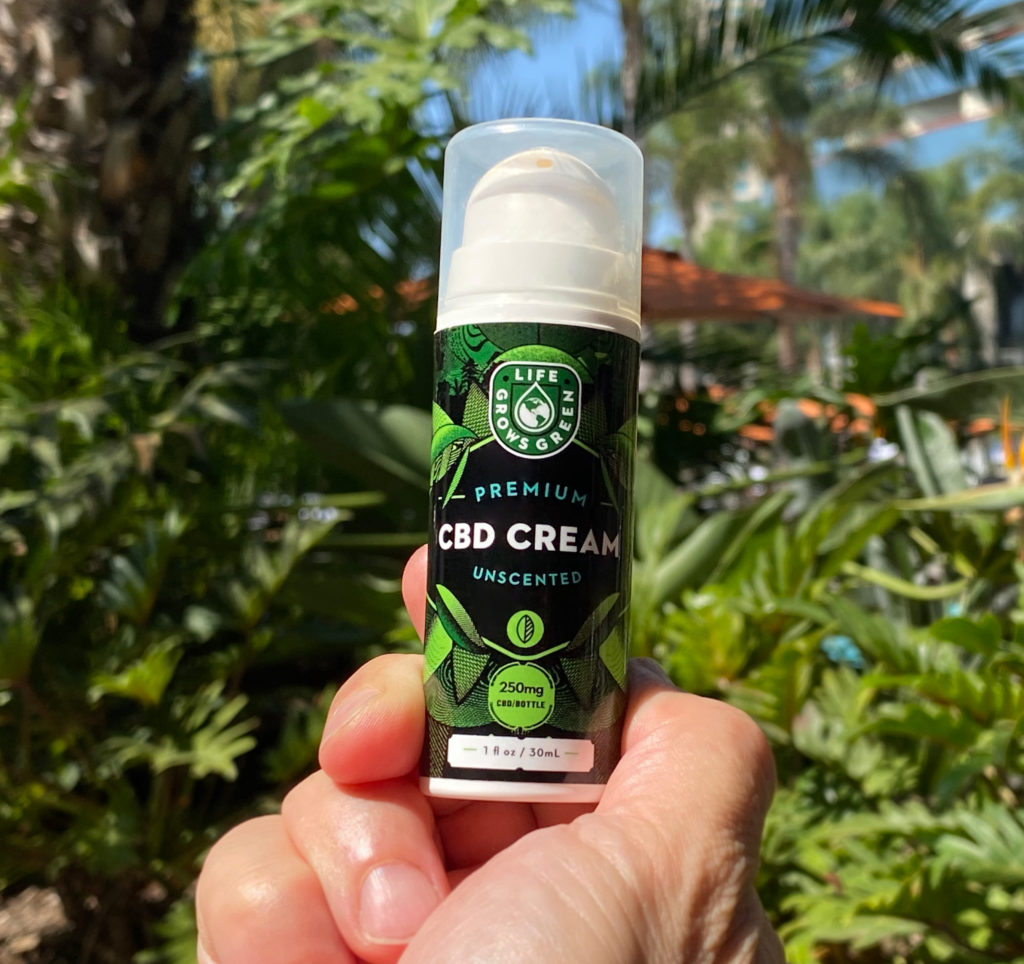
The global cannabidiol (CBD) market was valued at $2.8 billion in 2020, and it’s expected to expand by a further 20% by 2028. (1)
What used to be a niche range of products is expanding into all aspects of life, from catering to cosmetics. Mainly used for therapeutic reasons, CBD for sale is available at popular high street retailers and dedicated online CBD stores.
However, people notice that they can find seemingly the same product available for $1 or $100, depending on the retailer they shop with. This raises many questions.
Is it all the same quality? Do some CBD products work better than others? Is it worth shopping with luxury brands, and how does it work?
These are just a few questions people have if they’re looking to purchase from the CBD market. Luckily, we’re here to lay down the facts regarding CBD usage and let consumers know where it’s worth putting their money.
For a comprehensive CBD guide, read on.
An Introduction to CBD
Before diving into the commercialization of CBD and the products available, let’s take a brief look at what CBD is and where it comes from.
The official name for CBD is cannabidiol, although outside of research papers, you’ll usually see it abbreviated as CBD instead. It is the second most prevalent ingredient in the marijuana plant and is also found in hemp.
A Brief History of CBD
CBD was first discovered in 1940 by a Harvard chemist named Roger Adams. He was the first to extract CBD from the cannabis plant. Throughout the 1940s and 1950s, many pharmacological experiments sought to help us understand the structure of CBD.
However, it wasn’t until the 1980s when we began looking at the potential therapeutic benefits of CBD oil. The first goal was to treat epilepsy, and preliminary animal studies showed good promise.
The first human trial was conducted by Brazilian researchers in 1980. They gave epileptic patients a daily dose of 200mg of CBD and noticed dramatic reductions in seizure activity.
From 1980 until the late 1990s, research was focused on discovering the receptors CBD can act on and the mechanisms of action.
Then, in a groundbreaking move, California legalized medical marijuana in 1996, spearheading the now global legalization movement.
In October 2003, the US government patented CBD as a neuroprotectant, and a series of case studies showing its benefits followed.
By 2014, several states had passed legislation that deemed CBD appropriate for recreational use. Then, in 2018, the FDA approved a CBD product to treat epilepsy.
Finally, in December 2018, the Farm Bill was signed into law. This bill allowed for the production of industrial hemp to be cultivated into CBD. Since then, the CBD market has boomed.
What Are Cannabinoids?
Cannabinoids are certain compounds that occur naturally in the Cannabis Sativa or hemp plant. While there are over 480 total compounds, only 113 of them are named cannabinoids.
The most well-known cannabinoids are delta-9-tetrahydrocannabinol (TBH) and cannabidiol (CBD).
The Endocannabinoid System
The endocannabinoid system is a biological system comprised of cannabinoids and the receptors in the brain that allow them to be metabolized. (2)
The endocannabinoid system is a web of complex biological pathways that include cannabinoids, enzymes that help degrade them, and cannabinoid receptors.
First, here are some advanced biology and pharmacology terms for reference:
- Endogenous-based lipids = endocannabinoids
- Anandamide = one of the key cannabinoids
- 2-AG = one of the key cannabinoids
- Fatty acid amide hydrolase = endocannabinoid enzyme
- Monoacylglycerol lipase = endocannabinoid enzyme
- CB1 and CB2 = cannabinoid receptors
Now, these are the technical terms for each aspect of the system. Let’s understand how it works.
First, when the cannabinoids (anandamide and 2-AG) are ingested, they bind to the receptors (CB1 and CB2) throughout the central and peripheral nervous system. The respective enzymes (fatty acid amide hydrolase and monoacylglycerol lipase) bind to cannabinoid and receptor and then degradation and release begin.
As the cannabinoids degrade, several systems are affected. These include:
- Memory
- Appetite
- Metabolism
- Autonomic nervous system regulation
- Stress response
- Immune function
- Female reproduction
- Analgesia
- Thermoregulation
- Sleep
- Exercise tolerance
With cannabinoids acting as neuromodulators for each of these systems, it’s no surprise that there are potentially therapeutic benefits within the endocannabinoid system. (3)
CBD vs. THC
CBD and THC are both chemical compounds (cannabinoids) that occur naturally within the cannabis plant. They bind to receptors that maintain homeostasis in the body (explained in the endocannabinoid systems section above) and therefore have therapeutic benefits for the same conditions.
However, there’s one critical difference. THC has psychoactive effects responsible for the “high” that’s associated with marijuana. This is because THC binds to CB1 receptors – these are associated with feelings of euphoria, anxiety, and paranoia.
CBD binds to different receptors that don’t induce the same feelings as THC. This is why you won’t feel “high” when you take CBD. CBD does affect serotonin receptors which can lower stress, and it can reduce THC’s ability to act on CB1 receptors. This can ward off some of the side effects of THC.
Hemp CBD vs. Cannabis CBD
CBD can be extracted from the Hemp or Cannabis sativa plant. These are the same species of plant, but hemp is federally legal, and it contains less than a 0.3% THC content. As to be expected, Cannabis sativa contains significantly more THC.
In essence, the hemp plant is a low-THC variation of cannabis. Usually, when taking commercial CBD products, it’ll be derived from hemp so that companies know they are remaining within the law and not exceeding legal THC limits.
Types of CBD
There are three types of CBD products that you can invest in. The CBD experience is vastly different depending on which kind of CBD is bought, so it’s worth taking the time to learn about the options. The types of CBD products are:
- Isolate
- Full-spectrum
- Broad-spectrum
Isolate products mean that the CBD compound is extracted from the plant. The plant matter is extensively refined and narrowed down until the final product is 99.9% pure CBD. After this process, sometimes artificial terpenes and flavonoids are reintroduced to improve the sensory aspects of the product.
Full-spectrum CBD uses the entire plant. This means that it still contains each of the cannabinoids, terpenes, and flavonoids of the cannabis plant. However, full-spectrum CBD will undergo testing to ensure that the specific THC level is below 0.3% to ensure that it’s legal.
Research shows that full-spectrum CBD has a more effective therapeutic profile than isolated strains, as the compounds all work together for the best results.
Finally, broad-spectrum CBD falls somewhere between isolate and full-spectrum. In broad-spectrum CBD, the whole plant is used, but all THC molecules are completed excluded from the final product.
What Does CBD Look Like?
There are three prominent appearances of CBD: raw, decarboxylated, and filtered.
Raw CBD will be dark green or black in appearance because the only processing it’s had is to extract it from the hemp or cannabis plant. Decarboxylated CBD looks almost identical to raw CBD. The only difference is that the active compounds are decarboxylated to improve their bioavailability.
Filtered CBD is what you’ll buy from manufacturers. It’s usually a light gold or green color and will be decarboxylated and filtered. When you look at a bottle of CBD, it should be one consistent color and texture, with no visible plant extract or separations.
You should also look out for the strong hemp flavor – anything overly flavored indicates unnecessary additives and processing.
The Entourage Effect
Dr. Raphael Mechoulam published a paper in 1999 that introduced the Entourage Effect. This theory has been further corroborated in 2020 research and helps us understand how full-spectrum CBD is potentially more therapeutic than isolated forms. (4)
The entourage effect theory highlights how each of the hundreds of organic compounds found in the cannabis plant work together to create an enhanced experience.
As well as the well-known CBD and THC, other cannabinoids are also necessary for the therapeutic effects of cannabis. These include but are not limited to CBG, CBN, CBC, and THCV. Additionally, terpenes increase the rate of cannabinoid absorption in the body.
Therapeutic Benefits of CBD
Discussing the benefits of CBD can be a tricky subject; there is a multitude of clinical trials surrounding the benefits of CBD, but most of the research is relatively new.
Although the FDA has now legalized a cannabis-derived medicine for epilepsy, the evidence is a few years away from solid conclusions around the benefits of CBD.
This is not to say it doesn’t work, just that it’s a new phenomenon. There are plenty of completed and clinical trials that show huge promise for CBD products in several conditions.
Mental Health Disorders
Perhaps the most interesting benefit of CBD usage is the effect it may have on mental health. Whereas smoking cannabis can increase the risk of developing anxiety and schizophrenia, it’s thought that CBD may mitigate the chances of developing mental health conditions.
A 2020 systematic review by Khan et al., looked at the therapeutic role of CBD in several mental health disorders. Khan reviewed 23 pieces of research that ranged from case studies to randomized controlled trials. (5)
This review showed that CBD and CBD-containing compounds helped alleviate the symptoms of psychosis, schizophrenia, social anxiety, ASD, and ADHD. It was also effective at lessening the effects of cannabis-related disorders and withdrawal.
However, there was weaker evidence for treating bipolar disorder and post-traumatic stress disorder.
The current stance taken by the FDA is that further research is needed to conclusively support the use of CBD as a treatment for mental health conditions. (6)
There are dozens of clinical trials underway to assess this, so the FDA will make another statement once these trials are completed.
Pain
So far, it seems that CBD can help with two types of pain: neuropathic and inflammatory.
Neuropathic pain is created in the glutamatergic system and is usually chronic. It’s caused by progressive nerve disease, injury, or infection. People that suffer from neuropathic pain often complain of unexplained flare-ups in their symptoms.
CBD can inhibit the glutamate release (a critical part of neuropathic pain signaling) and helps dull prickling, tingling, and burning sensations.
Inflammatory pain presents similar symptoms, but it isn’t limited to neurons. Conditions like Crohn’s disease, migraines, muscle aches, and arthritis are all types of inflammatory pain.
CBD has a unique mechanism of action for reducing inflammatory pain. It doesn’t act on the COX-1 and COX-2 receptors, unlike other anti-inflammatory drugs. Instead, it can provide systemic relief from inflammation.
A 2020 case series and literature review looked at the use of CBD for both acute and chronic back pain. (7) There were two patients in this case study: a 40-year-old man with 8/10 back pain after a fall and a 61-year-old woman with chronic back pain.
The male patient found that his pain was reduced to a 2/10 for approximately 10 hours, and after four weeks of treatment, he was pain-free. The female patient said she gained 7-8 hours of relief from her pain.
This seems very promising. However, most research on CBD and pain is from anecdotal evidence and small case studies. Therefore, before being commercialized as an effective treatment, results from robust randomized controlled trials must be published.
Sleep Disorders
A recent Consumer Reports survey found that around 10% of Americans who try CBD use it to help them sleep. (8) Again, clinical trials that show the effectiveness of CBD for sleep are in their infancy, and we do not fully understand the mechanism of action.
However, even if we don’t have a comprehensive understanding, there are several factors to consider when it comes to CBD and sleep disorders.
First, full-spectrum CBD often contains myrcene. This terpene has a sedating effect, and it’s been used as a natural sleep aid for centuries. Therefore, it’s unclear whether CBD or myrcene helps send people to sleep in the absence of controlled clinical trials.
Additionally, as highlighted in an abstract named Cannabis, Cannabinoids, and Sleep, multiple other cannabinoids have a sedating effect; the Entourage Effect definitely comes into play when treating sleep conditions with cannabis products. (9)
There is some evidence that supports isolated CBD for a particular sleep abnormality. In normal REM sleep, the limbs become paralyzed to stop people from acting out dreams. However, in REM behavior disorder, this paralysis doesn’t happen; this is potentially dangerous for the person and anyone around them.
However, CBD in doses of 75-300 mg has been shown to help induce this paralysis in these patients and restore natural dreaming.
Seizures
Whereas for many other conditions, the evidence for CBD is anecdotal or in progress, research conclusively shows that CBD does help with seizure disorders.
In a massive step for the industry, in 2018 the FDA approved the first CBD-based medicine for Dravet syndrome, Lennox-Gastaut syndrome, and tuberous sclerosis syndrome. (10)
Epidolex is a liquid CBD solution prescribed for people suffering from these rare forms of epilepsy if their seizures haven’t improved by using other medications.
Unlike mainstream medications, the likelihood of suffering adverse symptoms when taking Epidolex is reduced. However, up to 25% of people will notice unusual drowsiness.
In order to get FDA approval, there were several clinical trials completed. The first was to test the effectiveness in patients with Lennox-Gastaut syndrome. (11)
This randomized controlled trial found that 50% of the patients that took 20mg/kg/day for 14 weeks had 42-44% fewer seizures than before.
The subsequent clinical trial assessed how well CBD reduced the number of drug-resistant seizures in patients with Dravet syndrome. (12) Their findings were that Epidolex, in combination with standard anti-epilepsy drugs, reduced seizures by 26% when compared to the placebo group.
The final clinical trial was to test whether CBD would work for people with tuberous sclerosis. (13) Again, during a 16-week study, the group taking Epidolex had 43% fewer seizures.
The results of these three trials were so positive that there are currently clinical trials testing whether Epidolex can be used to treat anxiety, bipolar, alcohol use disorder, Crohn’s disease, Parkinson’s disease, and psoriatic arthritis.
Should these studies have the same results as the completed trials, we can expect to see a massive increase in the use of CBD for each of these conditions.
Using CBD Products
Now, simply knowing the details of CBD and what conditions it can help with isn’t enough. It’s also essential to understand the legal status in your area, what type of CBD you should use, how to use it, and who shouldn’t use it.
First, let’s dive into the legalities of CBD across the states.
Legal Status of CBD
Alongside the worldwide movement to legalize cannabis, CBD is also gaining traction. However, just because it’s not cannabis doesn’t make it a simple matter.
In 2018 the Drug Enforcement Agency announced that CBD containing less than 0.1% THC would be categorized in Schedule V of the Controlled Substances Act. (14) This means it has a low potential for abuse, and other schedule V drugs include antidiarrheal, antitussive, and analgesic medications.
Federally, CBD is legal as long as it contains less than 0.3% THC. This came alongside the 2018 Hemp Farming Act. However, if your CBD is sourced from marijuana rather than hemp, you could still be breaking the law even if it’s below 0.3% THC.
If you’re in a state that has legalized (or decriminalized) cannabis for recreational use, there are few restrictions on CBD products. Your CBD can be derived from marijuana or hemp and can contain more than 0.3% THC.
As of December 2021, these states are:
- Alaska
- Arizona
- California
- Colorado
- Connecticut
- Delaware
- Illinois
- Maine
- Maryland
- Massachusetts
- Michigan
- Minnesota
- Mississippi
- Missouri
- Montana
- Nebraska
- Nevada
- New Hampshire
- New Jersey
- New Mexico
- New York
- North Carolina
- North Dakota
- Ohio
- Oregon
- Rhode Island
- Vermont
- Virginia
- Washington
- District of Columbia
Bear in mind that states are legalizing marijuana quickly, and CBD laws relax alongside this.
However, if you’re in a state with restrictions on recreational marijuana use, there will be more stringent laws around CBD usage. Some states will allow marijuana-sourced CBD for medical or recreational use as long as it doesn’t contain more than 0.3% THC.
For detailed information about whether you can use CBD freely, always check your local government websites.
Drug Testing and CBD Use
Many people face regular drug testing for a variety of reasons. Whether it’s for probationary reasons or employment, fighting the case of an unfairly positive drug test is a battle that most people don’t win. So, it’s best to be informed about the risks.
Fortunately, there are ways to ensure that a drug test won’t come back positive for marijuana when using CBD.
First of all, it’s important to note that you cannot fail a drug test for CBD. However, if the CBD contains THC, then it is a possibility. Federal employees need to be especially careful because even trace amounts of THC can cause a positive result.
It is unlikely that a reputable CBD brand would contain enough THC to show up on a drug test, but factors such as CBD source, dose, personal chemistry, and length of use can all influence results.
People who have to take regular drug tests may find it more sensible to take full-spectrum or isolate forms of CBD, as they’ve had all the THC extracted from them.
Types of CBD Products
As the market has boomed, so has the variety in CBD products. The original CBD products were oils, but now CBD comes in edible, smokable, and cosmetic forms. Here we’ll look at some of the common types of CBD products on the market.
CBD Oil
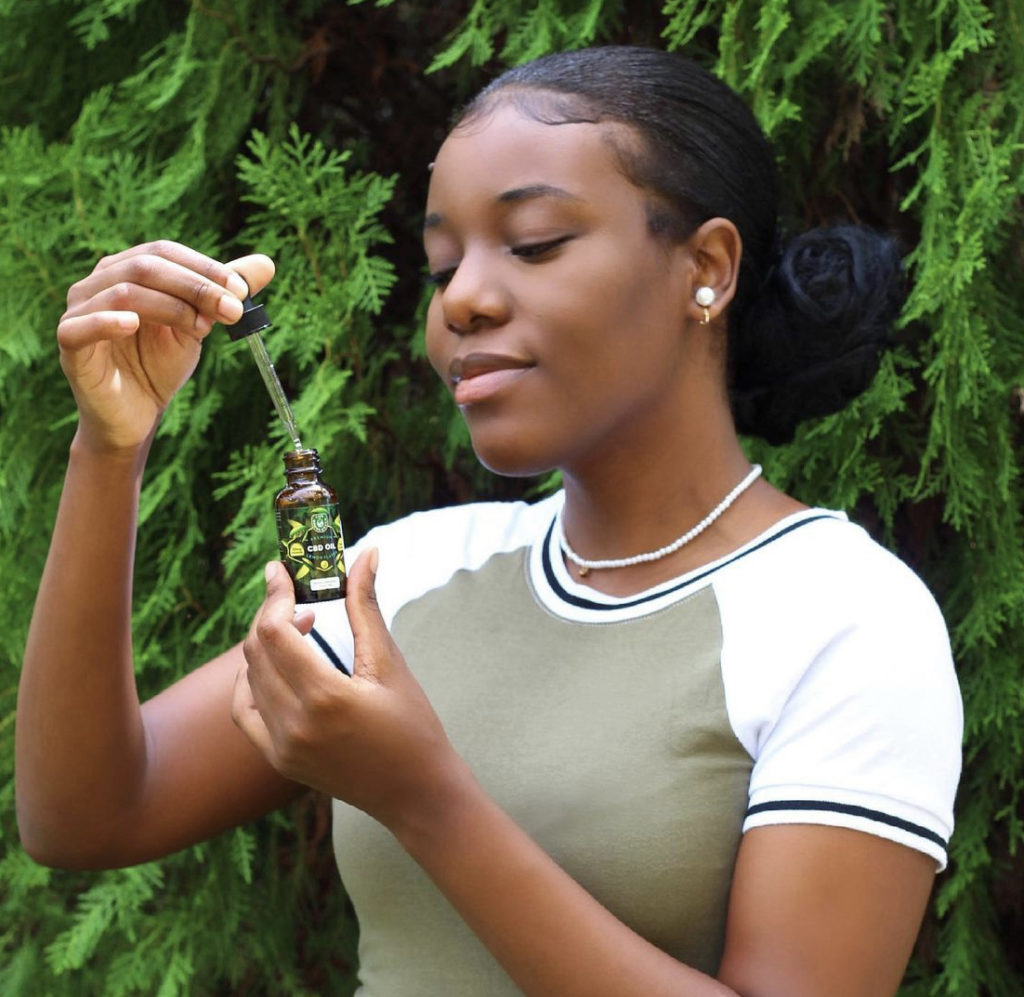
The classic form of CBD, and the same as the only FDA-approved medicine, is CBD oil. The benefit of CBD oils is that you can get pure, unadulterated CBD without any gimmicks.
For example, this vegan-friendly Premium CBD Oil is made from organic extra-virgin olive oil, organic peppermint essential oil, and CBD hemp extract. Nothing more, nothing less. Each dropper contains 15 mg of broad-spectrum CBD with 0.0% THC.
The CBD is extracted from the hemp or cannabis plant to make CBD oil. This is done by CO2 extraction, ethanol extraction, or hydrocarbon extraction. These are complex processes, and the result is pure CBD oil.
This oil can either be sold as oil or form the basis for any of the following CBD products.
Edibles
The market is flush with edible CBD products. However, these candies, chocolates, and gummies are a more popular option for those wanting a discreet way to consume THC.
Tablets
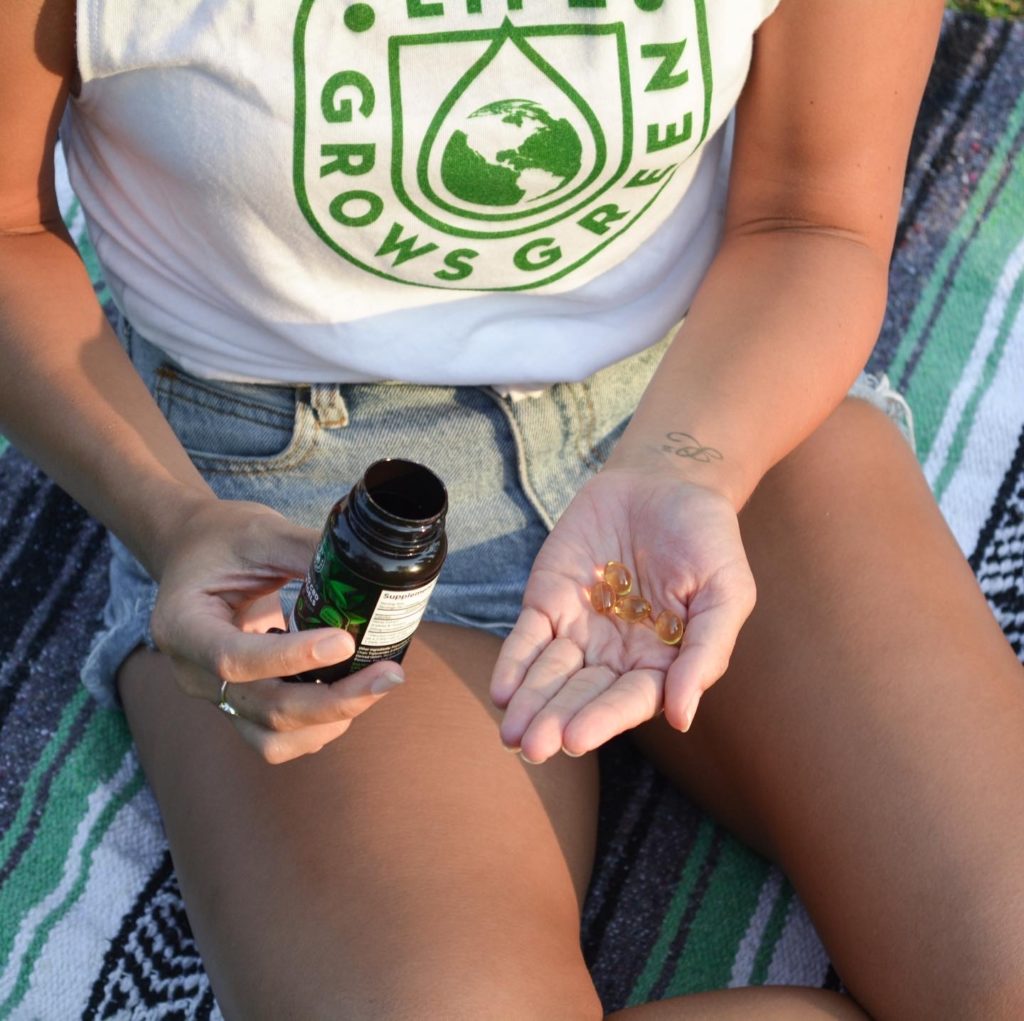
Tablets are the new gold standard in the CBD market. CBD Softgels are made with nanoemulsion technology and water-soluble capsules. This makes them more absorbable than most oils. You can tailor your dosage to your needs, choosing either 10 mg or 25 mg capsules.
Topicals and Lotions
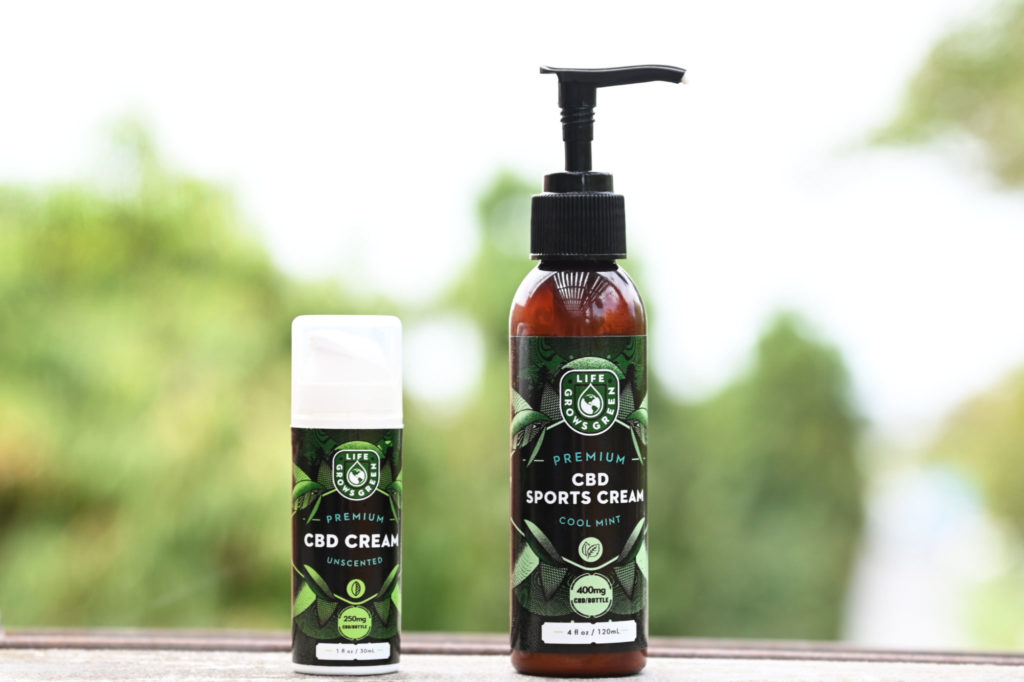
Topicals and lotions are a popular choice for people with skin conditions and aches and pains. This Premium CBD Salve has been designed as a luxurious balm for any part of the body; it can soothe muscles, support joints, and moisturize the skin.
If you’re looking for a more targeted approach, try a CBD Sports Cream. These include natural cooling sensations to add to the healing benefits of CBD.
Vapes
Some people choose to vape CBD for an immediate effect. However, it’s important to note that when you vape CBD, you’re mixing it with other chemicals that can mitigate the positive benefits of CBD.
Additionally, there are added risks of adverse effects if you have heart or lung conditions. It’s extremely important to ensure you purchase from a reputable and legal CBD vendor if you want to vape CBD.
Cosmetics
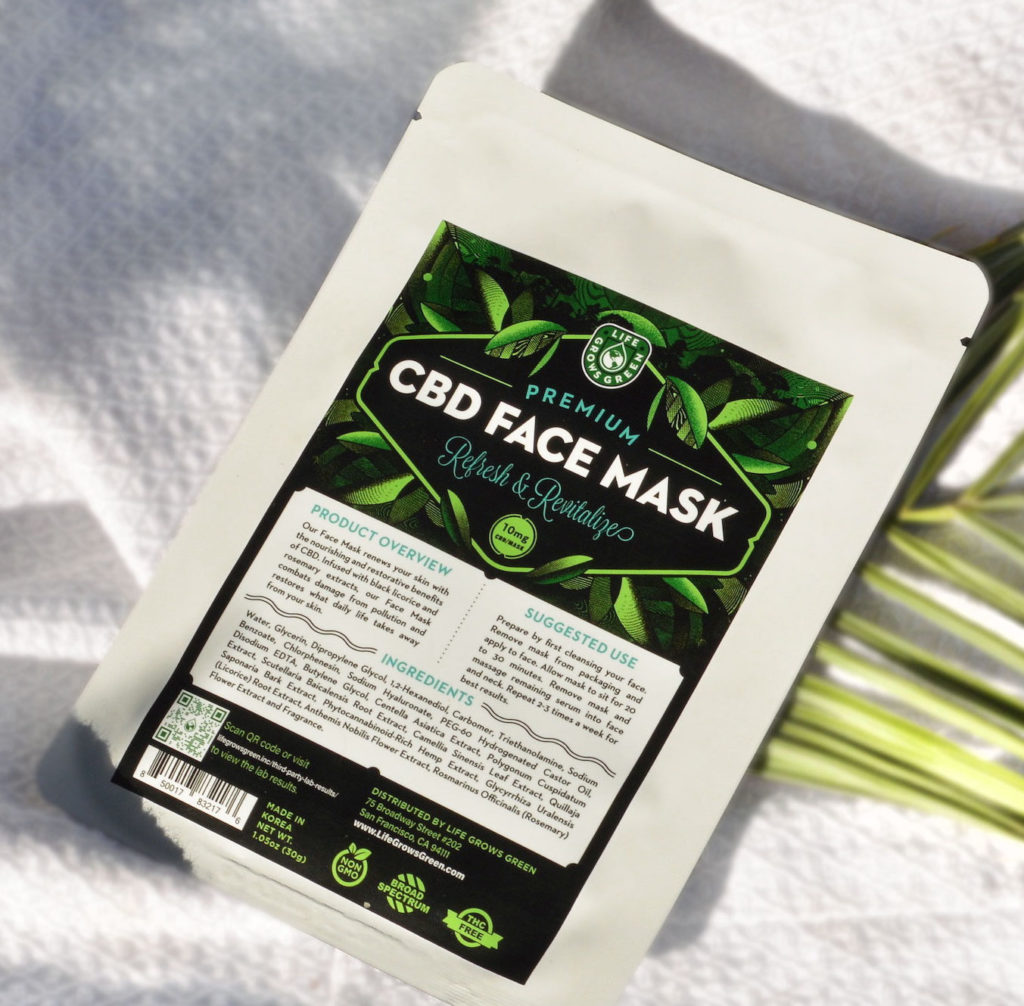
A growing problem in the cosmetic industry is the addition of artificial flavorings, colorings, and perfumes. However, CBD products can bring it back to basics with all-natural ingredients.
Whether it’s face masks enriched with CBD or makeup, there are hundreds of CBD brands offering cosmetics. You should always search for products with normal-sounding ingredients in order to get the full benefit of CBD. For example, this CBD Salve Stick has only natural ingredients and is unscented.
Tinctures
Tinctures are a popular option for fast relief. They are placed under the tongue and are absorbed directly into the bloodstream. Therefore, they skip the first level of degradation in the liver.
Drinks
Many cafes, bars, and restaurants now offer CBD-enriched drinks. However, don’t be afraid to ask these establishments to see a certificate of analysis for their CBD because they’ll often buy the cheapest and lowest quality CBD they can find.
Unless you trust the vendor, be aware that you may not notice therapeutic benefits from CBD that’s sold in this way.
Pets
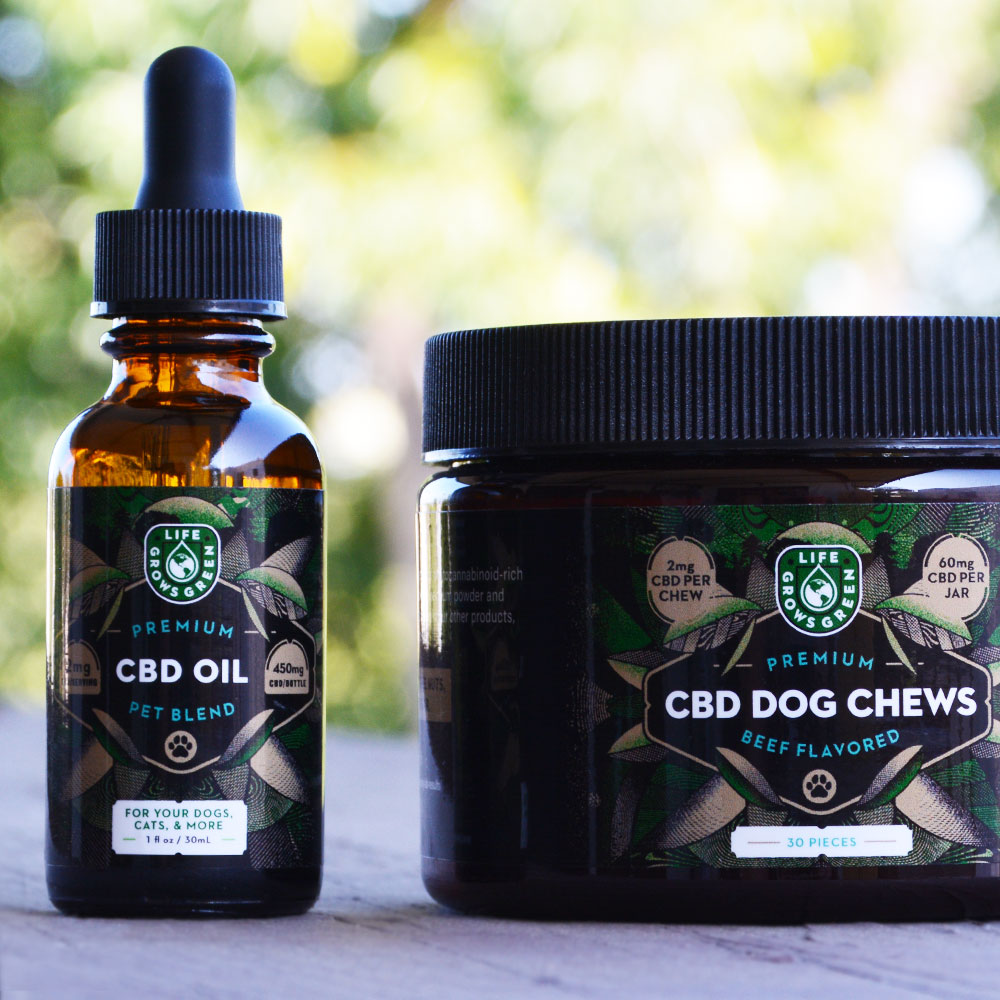
Finally, believe it or not, CBD can help out our furry friends. Many people now medicate their pets with daily CBD-enriched cat or dog treats.
Research over the years has discovered that pets are at risk of some of the same mental health conditions as humans, so CBD can help alleviate their symptoms.
Additionally, a premium pet tincture designed for dogs and cats can help soothe aches and pains in their old age.
Dosage
While you can’t overdose on CBD, taking too much increases the likelihood of suffering adverse symptoms or testing positive for THC if you’re using full-spectrum CBD.
Additionally, the potential benefits will plateau at a certain point, and it’ll be a waste of product.
There are several factors to consider when choosing your dose.
First, consider whether you already have a tolerance to cannabis products. If you’re a regular cannabis user, you’ll likely have a tolerance to CBD products already. Still, start with a lower dose and increase it if needed.
Your age may also affect the dose you need; older people have slower metabolisms, which means a lower quantity would be substantial. Finally, be aware that some prescription medications can reduce CBD’s efficacy because the same enzymes degrade them.
Overall, around 10-25 mg per day would be considered a typical starting dose.
Once you’re more experienced with taking it, 1 mg of CBD per kilogram of body weight is a reasonable dose. The bigger a person is, the more cannabinoids they’ll need to achieve the same effects as a lighter person on a lesser dose.
If you experience side effects, try lowering your dose and gradually increasing it again.
Contraindications
CBD is considered safe when it’s used on its own, but it can interact with certain medications. It can have these effects because both CBD and many common drugs are metabolized by the cytochrome P450 enzymes.
Therefore, if you’re taking CBD, more of these enzymes will be working to break down the CBD, and there may not be enough left to break down medication. This can lead to medications either building up in toxic levels or being ineffective.
Common drugs that may have interactions include:
- Certain antibiotics
- Anticancer medications
- Blood pressure medications
- Blood thinners
- Corticosteroids
- Analgesics
- Antidepressants
A good rule of thumb is to look for the grapefruit warning. Grapefruit is a contraindication with many drugs for the same reason (cytochrome P450 enzyme). If your medication has a warning about grapefruit, then take caution with CBD.
Debunking CBD Myths
As the CBD industry has boomed, so has the number of unqualified people willing to give their “expert” opinions on the facts around CBD. Much like any topic within health and wellness, it can be challenging to sort the facts from the fiction.
Here we’ll debunk some of the myths you’re likely to hear.
1. CBD Is a Scam
Avid cannabis users are famous for trying CBD and being disappointed with the results, thus labeling it a scam. However, they shouldn’t think of CBD as an intoxicating drug; the effects take a while to build up and are far more subtle.
There are several ways that we know CBD works. First, we understand the mechanisms of action within the endocannabinoid system, and logically we can understand how CBD would create these effects.
Next, although research is in the early stages, the trials that say Epidolex FDA-approved had resounding success in reducing seizure activity in people with epilepsy.
The issue surrounding CBD and “scam” connotations is when food and drinks establishments add low-quality and unregulated CBD to products and charge exorbitantly for the service. Unsurprisingly, people are disappointed in the lack of effectiveness; ensure you always buy CBD from reputable stores.
2. All CBD Is Created Equal
This is another problem with people trying CBD once and deciding it’s not worth their time. The first thing to consider when buying CBD is the potency; make sure it clearly specifies how much CBD is in each dose – otherwise, you could be wasting your money.
Also, check whether the CBD product is full-spectrum, broad-spectrum, or isolate; as explained above, this can drastically affect the CBD experience.
3. CBD Has Next-Day Results
If you apply high-dose creams or vape CBD, you’ll notice an instant effect. However, the main benefits of CBD are graduated. As the CBD builds up in your system, your neural pathways can adjust to have more favorable patterns.
You’ll notice the real benefits of CBD, rather than instant onset, after a few days or weeks of using CBD at the recommended dose.
4. CBD Is Addictive
Because it’s derived from the cannabis family, it’s understandable to be concerned about dependency or addiction to CBD.
However, the World Health Organization has this to say about the potential for abuse: “In humans, CBD exhibits no effects indicative of any abuse or dependence potential.”
Additionally, to date, there is no published research that states there have ever been any public health problems caused by the use of CBD.
5. Stomach Acid Turns CBD to THC
This is an old-school myth based on the idea that the powerful hydrochloric stomach acid could degrade CBD into THC. It had a resurgence in 2016 after a fraudulent paper was published that falsely claimed this to be fact; it was later revealed that this paper was funded by a company that was anti-oral CBD.
However, multiple research papers have debunked this rumor and there is simply no truth to it.
6. CBD Has No Side Effects
CBD is a natural supplement, so many people believe it is without side effects. However, if you take enough of virtually anything, you’ll get some adverse reactions.
Although it’s safe, if your dose of CBD is too high, you may notice diarrhea, sleepiness, and irritability.
You also need to ensure it’s safe for you to take CBD alongside any prescription medications. CBD can slow down the liver’s metabolic rate of medications, which can lead to unsafe levels in the blood. Always check with your doctor before starting a new supplement if you take regular medications or have a health condition.
7. CBD Isn’t Psychoactive
Because people associate the “high” that marijuana causes with psychoactive activity, they’re quick to decide that CBD is non-psychoactive. This isn’t the case.
Psychoactive simply means that it is able to affect or change your mental state by altering the brain or nervous system activity. This is not inherently a bad thing and doesn’t always lead to intoxication.
Research that shows CBD binding to serotonin receptors makes it clear that CBD can have a psychoactive effect. But, in the absence of THC, it will not be intoxicating.
How to Buy CBD
If you’re tempted by CBD, it’s important to choose the right product. With thousands of manufacturers available, it can be difficult to find high-quality CBD, and there are several factors to consider.
First, think about what you want CBD for. The beauty of CBD being available in so many forms is that you can find a product that’ll be suitable for most ailments. If you want it for relaxation, try a CBD-infused bath bomb; if you want it for post-workout recovery, try a CBD sports cream.
You also need to consider whether you need full spectrum, broad-spectrum, or isolate. Full-spectrum and broad-spectrum are ideal for gaining the full entourage effect. But remember, if you take regular drug tests, then an isolate may be the best way to ensure you don’t test positive (although it’s extremely unlikely with a standard dose).
Next, you should check that the CBD company you’re looking at is staying on the right side of the law. If their CBD has a content of >0.3% THC, then they’re a cannabis product, not CBD.
Every reputable store will be able to provide a certificate of analysis and tell you where their ingredients are sourced. Additionally, they should also be able to provide test results from an independent lab.
Also, take a look at their website – are they professional and ethical? Look for testimonials and reviews that show how their business works in practice.
Check out the prices of the company you’re looking at – if it seems too good to be true, it probably is. Making a high-quality CBD is expensive, as the extraction and testing processes are extensive. There’s no need to buy the most costly CBD on the market, but don’t settle for poor quality.
Finally, find a CBD company whose mission matches your values. There’s no need to settle for less; you’ll be able to find many companies that are organic, vegan-friendly, reduce plastic use, and only use natural ingredients.
Most importantly, don’t be afraid to contact their customer services with any questions you may have about the products.
CBD for Sale: Now You Know the Facts
This guide to CBD highlights everything there is to know, how it works, and how to use CBD. So, next time there’s an advertisement for CBD for sale, you’ll know what to look out for.
At Life Grows Green, we’re more than just an online store. Our brand is dedicated to helping build a sustainable community through high-quality ingredients and mindful manufacturing.
If you’re looking to buy your first cannabis product, you can rest assured that you’ll receive the finest quality, natural CBD. Why not start with our flagship Premium Lemon CBD Oil?
References
- Grandview Research (2021) Cannabidiol Market Size. Available at: https://www.grandviewresearch.com/industry-analysis/cannabidiol-cbd-market
- Life Grows Green (2020) What Are Cannabinoids? Available at: https://lifegrowsgreen.com/what-are-cannabinoids/
- Lentz, T. and Eruklar, S. (2020) Nervous System. Brittanica. Available at: https://www.britannica.com/science/nervous-system/Neurotransmitters-and-neuromodulators
- Ferber, S. et al. (2020) The “Entourage Effect”: Terpenes Coupled with Cannabinoids for the Treatment of Mood Disorders and Anxiety Disorders. Current Neuropharmacology. Available at: https://www.ncbi.nlm.nih.gov/pmc/articles/PMC7324885/
- Khan, R. et al. (2020) The Therapeutic Role of Cannabidiol in Mental Health: a Systematic Review. Journal of Cannabis Research. Available at: https://jcannabisresearch.biomedcentral.com/articles/10.1186/s42238-019-0012-y#citeas
- Anxiety & Depression Association of America (2019) Can CBD Help With My Anxiety and Depression? Available at: https://adaa.org/learn-from-us/from-the-experts/blog-posts/consumer/can-cbd-help-my-anxiety-and-depression
- Eskander, J. et al. (2020) Cannabidiol (CBD) as a Treatment of Acute and Chronic Back Pain: a Case Series and Literature Review. Journal of Opioid Management. Available at: https://www.researchgate.net/profile/Jonathan-Eskander/publication/341491070_Cannabidiol_CBD_as_a_treatment_of_acute_and_chronic_back_pain_A_case_series_and_literature_review/links/5f6c0a28299bf1b53eedc4e3/Cannabidiol-CBD-as-a-treatment-of-acute-and-chronic-back-pain-A-case-series-and-literature-review.pdf
- Consumer Reports (2019) Can CBD Help You Sleep? Available at: https://www.consumerreports.org/cbd/can-cbd-help-you-sleep/
- Babson, K. et al. (2017) Cannabis, Cannabinoids, and Sleep: a Review of the Literature. Curr Psychiatry Rep. Available at: https://pubmed.ncbi.nlm.nih.gov/28349316/
- FDA (2018) FDA Approves First Drug Comprised of an Active Ingredient Derived from Marijuana to Treat Rare, Severe Forms of Epilepsy. Available at: https://www.fda.gov/news-events/press-announcements/fda-approves-first-drug-comprised-active-ingredient-derived-marijuana-treat-rare-severe-forms
- Devinsky, O. et al. (2018) Effect of Cannabidiol on Drop Seizures in the Lennox–Gastaut Syndrome. New England Journal of Medicine. Available at: https://www.nejm.org/doi/10.1056/NEJMoa1714631
- Devinsky, O. et al. (2017) Trial of Cannabidiol for Drug-Resistant Seizures in the Dravet Syndrome. New England Journal of Medicine. Available at: https://www.nejm.org/doi/10.1056/NEJMoa1611618
- Thiele, E. et al. (2021) Add-on Cannabidiol Treatment for Drug-Resistant Seizures in Tuberous Sclerosis Complex: A Placebo-Controlled Randomized Clinical Trial. JAMA Neurology. Available at: https://pubmed.ncbi.nlm.nih.gov/33346789/
- Drug Enforcement Agency (2018) Schedules of Controlled Substances: Placement in Schedule V of Certain FDA-Approved Drugs Containing Cannabidiol; Corresponding Change to Permit Requirements. Available at: https://www.federalregister.gov/documents/2018/09/28/2018-21121/schedules-of-controlled-substances-placement-in-schedule-v-of-certain-fda-approved-drugs-containing
